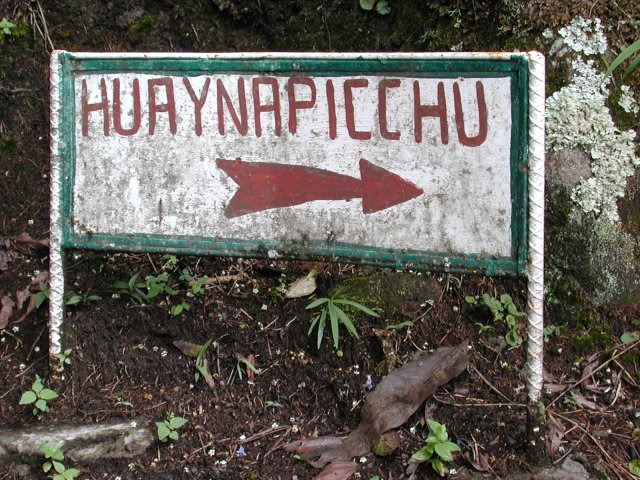
|
This sign marks the trail to Huayna Picchu.
|
Machu Picchu and the Huayna Picchu Trailhead
back
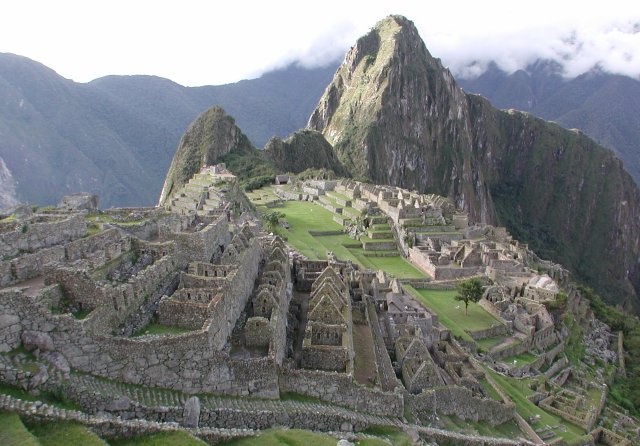
|
The postcard view of Machu Picchu looks from the slopes above it
and to the north toward the south. Huayna Picchu is the tall
sunlit spire in this photo.
|
Machu Picchu and the Huayna Picchu Trailhead
back
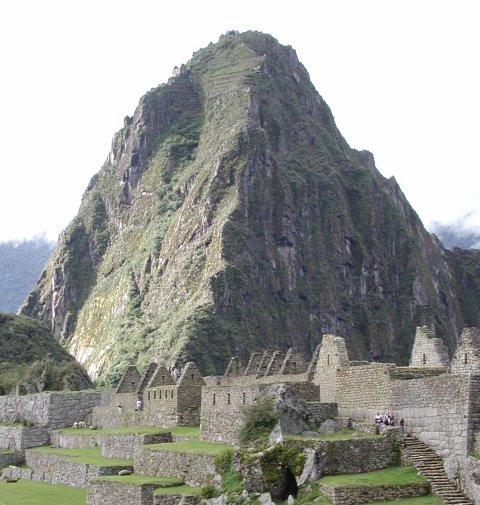
|
A closer look at Huayna Picchu shows that it is a steep pinnacle,
but one that the Incas domesticated five hundred years ago. Note
the agricultural terraces near the summit of the peak, in the
sunlight. Another even steeper set of terraces is visible in the
shadows to the left of the sunlit face. The ruins of a storehouse
are visible on the ridge above these shaded terraces. The crux pitch
of the descent follows the edge of the shaded terraces, in the
corner between them and the sunlit area.
|
back
The Upward Path - The Trail up Huayna Picchu
back
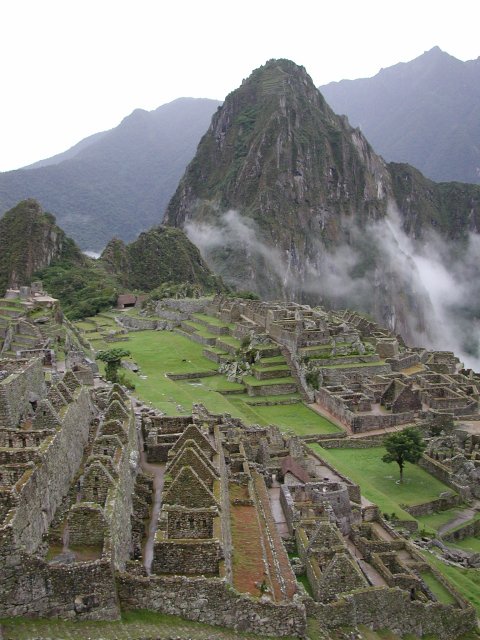
|
Morning light and drifting mists lend a different feel to
Machu Picchu. A light rain blew up (literally) occasionally
to punctuate a steady drizzle. The trail to Huayna Picchu
leads from the south end of Machu Picchu, between the two
thatch-roofed shelters immediately in front of the ridge
in the center left of this photo.
|
The Upward Path - The Trail up Huayna Picchu
back
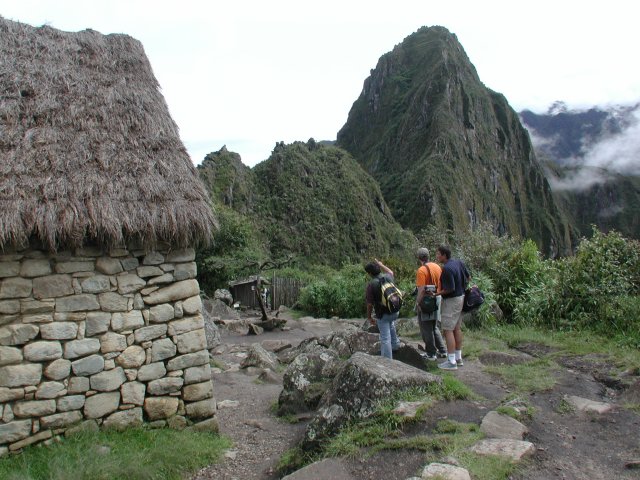
|
Looking past the shelters, you can see the gate and hut where
the signin log is kept. If you get there early, there may not
be anyone to record your name, but no one said anything when
I walked out a few hours later and explained that there had
been nowhere to sign in when I left the trailhead at 7:10 a.m.
|
The Upward Path - The Trail up Huayna Picchu
back
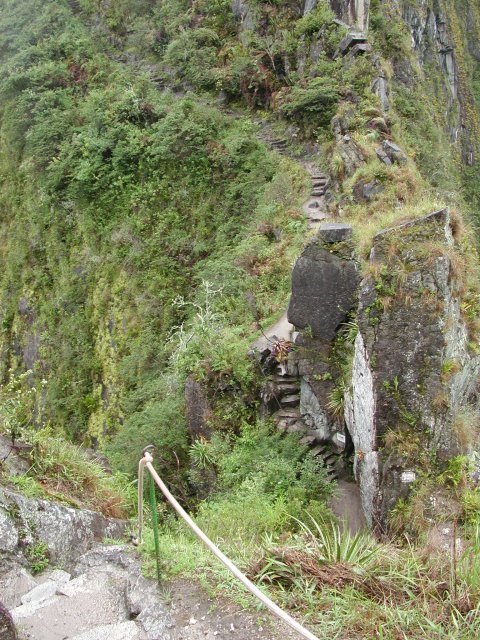
|
Can you say "airy traverse?" Ok, by mountaineering
standards, it's a sidewalk, but for some of the tourists, this
marked their "I think it's time to turn around" revelation.
|
The Upward Path - The Trail up Huayna Picchu
back
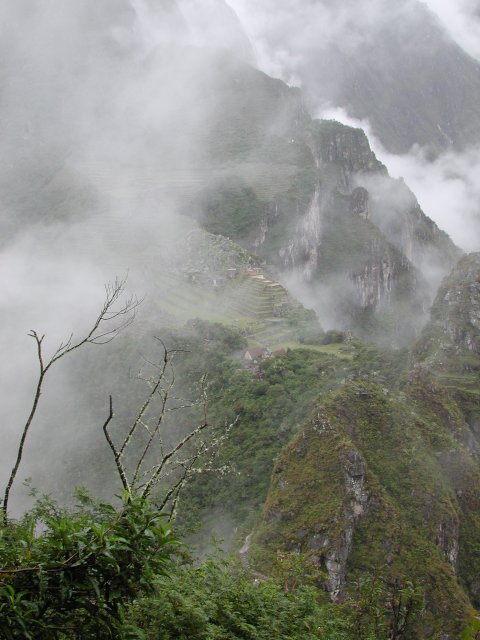
|
As the trail snakes its way up Huayna Picchu, the vista shifts
from the Urubamba river to a view back to Machu Picchu. Lost in
the mists of time, it seemed to await rediscovery despite the
fact that busloads of tourists would invade as soon as the morning
train from Cuzco arrived about 11 a.m.
|
The Summit of Huayna Picchu
back
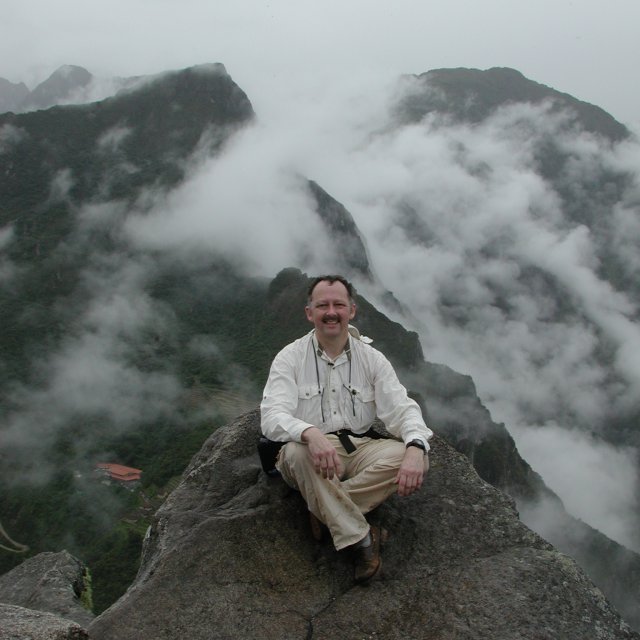
|
A bit of scrambling brings you to this boulder. I am sitting on
a nicely-carved platform that affords a panoramic view of Machu
Picchu, the Urubamba river far below, and a plethora of peaks
in all directions. Unfortunately, the clouds were closing in
by this time, limiting the vista significantly.
The red tile roof to the left of my perch is the restaurant and
visitor's center for Machu Picchu. Barely visible in the lower
left corner is one of the many switchbacks in the road leading
from Aguas Calientes up to Machu Picchu.
|
The Return Path - Returning from Huayna Picchu
back
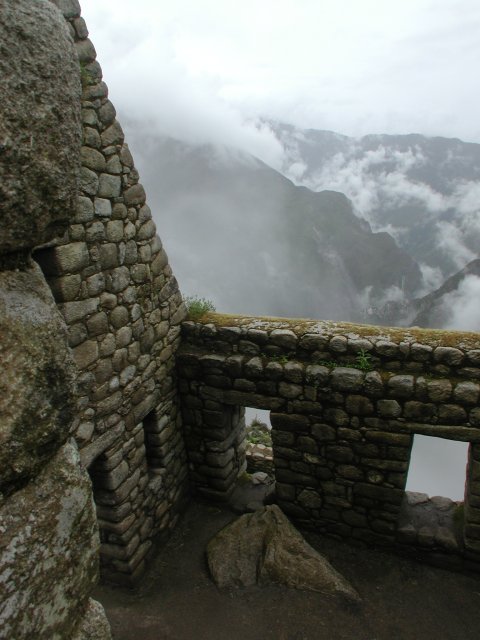
|
This Inca storehouse is the one visible in the shots of
Huayna Picchu from Machu Picchu. It commands an impressive
view of the Urubamba river valley below.
|
The Return Path - Returning from Huayna Picchu
back
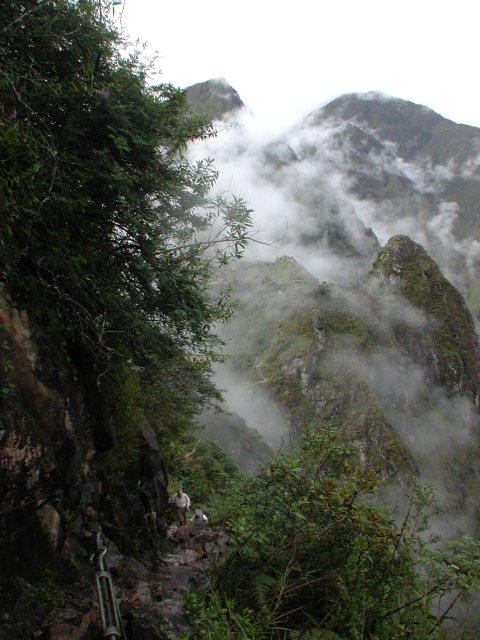
|
Just below the Inca storehouse, the steps become extremely
steep. Looking at the two climbers below, it is easy to
see just how steep, as the second climber is only 3 or 4 feet
behind the lead climber, but his head is below the level of
his partner's feet. These steps are narrow enough that it
was necessary to sidestep down them.
|
The Return Path - Returning from Huayna Picchu
back
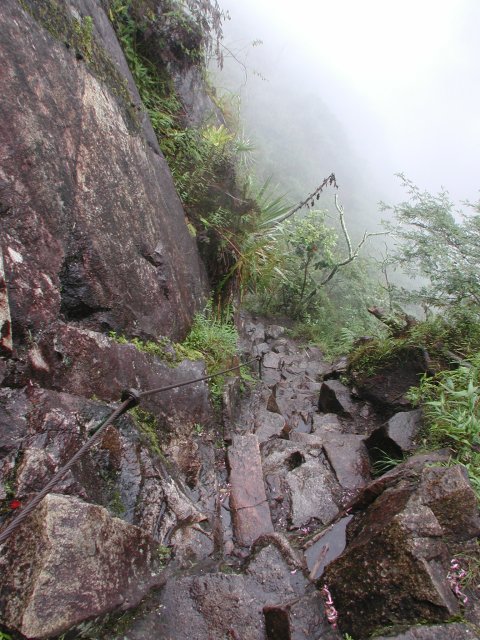
|
Below that one very steep pitch, the steps become more
gradual, leading to a few relatively flat spots in the
trail before you rejoin the stretch back across the
knife-edge ridge.
|
The Return Path - Returning from Huayna Picchu
back
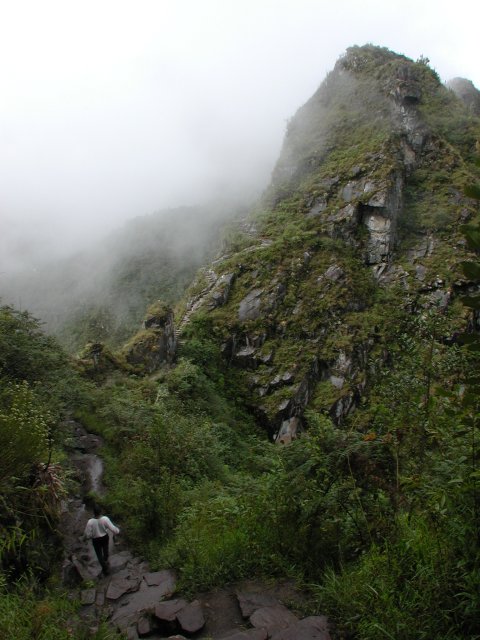
|
Once again, the backpacker's nightmare of "what goes down
must come back up" applies, as you drop well below the
level of Machu Picchu before crossing the ridge and ascending
100' or so back to the level of the trailhead.
|
The Return Path - Returning from Huayna Picchu
back
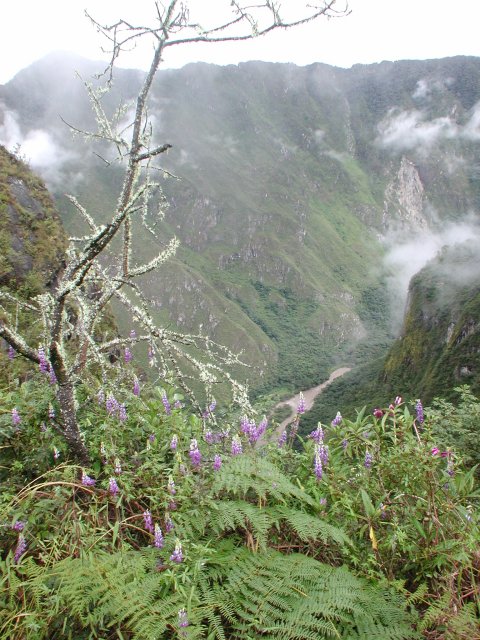
|
The cloud forest nature of the area is apparent as moss
encrusts this dead tree. The lupines were actually cultivated
by the Incas as a food crop, requiring special preparation
since they are normally inedible.
|
The Return Path - Returning from Huayna Picchu
back
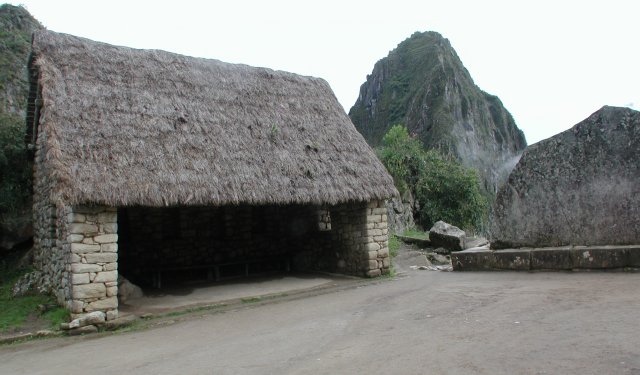
|
Back safely to level ground. Huayna Picchu bids adios
in the background.
|
The Return Path - Returning from Huayna Picchu
back
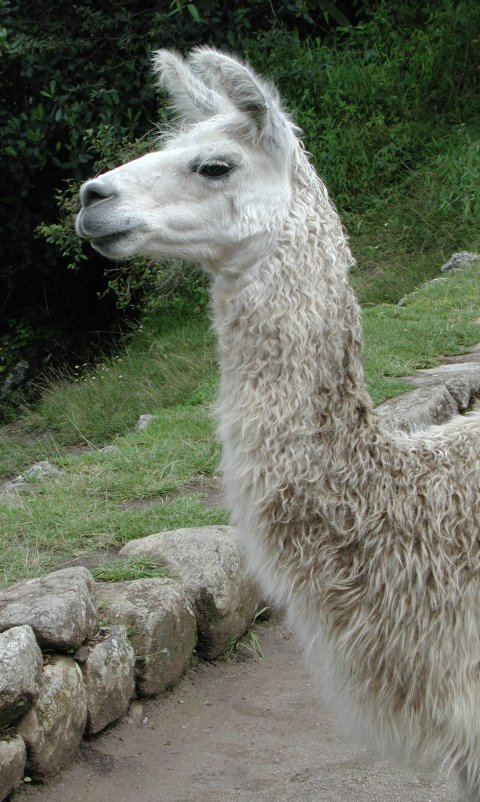
|
Trailhead welcoming committee and lawn mower. A small herd of
llamas patrol the ruins, cropping grass on the terraces and posing
for photos. Be aware that the Department of Agriculture inspectors
will insist on disinfecting your shoes when you return to the U.S.
after visiting Machu Picchu. It pays to have your shoes packed where
you can get to them so the inspector can spray them and get rid of
any (suspected) hoof-and-mouth contamination.
|














